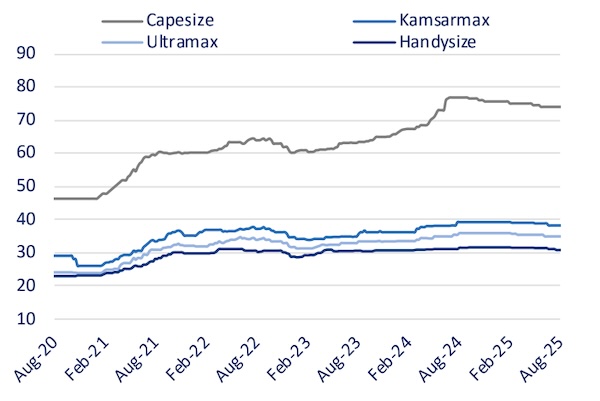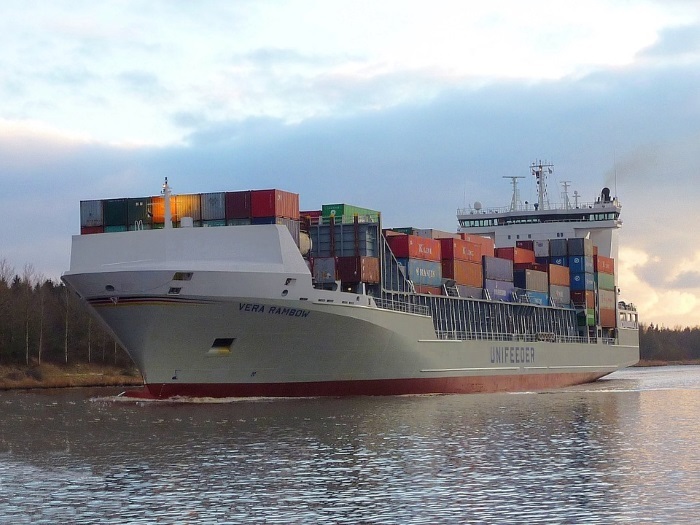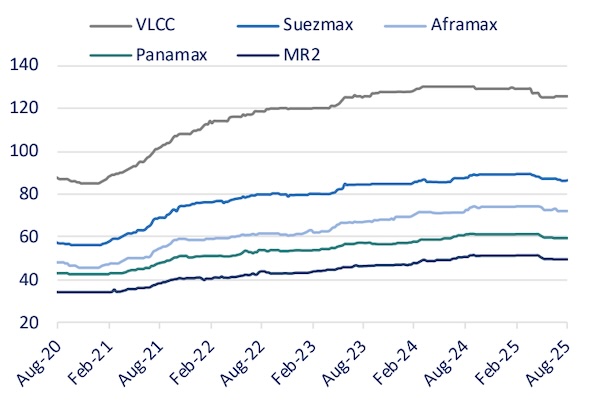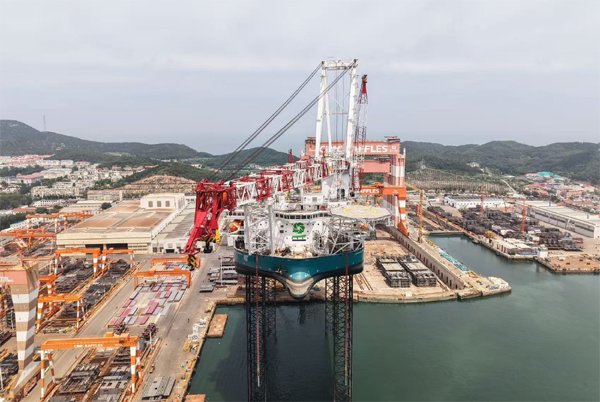

Ship owners have been keeping even obsolete ships from scrapping so far this year, as the cashflows they produce are significant. In its latest weekly report, shipbroker Xclusiv said that “ship demolition activity over the past five years reveals a cyclical but narrowing trend, with 2025 standing out for its low absolute numbers, despite covering only the first eight months. From 2020 to 2025, the annual demolition totals swing widely, shaped by freight markets, asset values, and regulatory pressures. The standout years remain 2020 and 2021, when 308 and 291 ships respectively were scrapped. Since then, the pattern has been one of muted scrapping. In 2023, demolition activity picked up to 215 units, led by bulk carriers (92) and containerships (82), reflecting the correction in dry bulk earnings and the unwinding of pandemic-driven container demand. But 2024 slipped back to 164 units, and 2025, with just 122 ships scrapped in the first eight months (0.38% of the fleet), is on track to be one of the lightest years of the decade. Even if scrapping accelerates through year-end, total numbers are unlikely to exceed the 200-mark”.

Source: Xclusiv
According to the shipbroker, “by segment, tankers show an inconsistent rhythm. From 179 units in 2021, scrapping plunged to just 11 in 2024, underscoring how quickly sentiment swings when freight markets and asset values strengthen. In 2025, 28 tankers have already gone, suggesting some release of older tonnage, especially as Handy/MR1s and smaller units approach or exceed 20 years of age. Bulk carriers remain a major demolition driver, though the 54 units removed so far in 2025 (less than 0.7% of their fleet) are modest compared to the 144 in 2020. High secondhand values and persistent demand for vintage ships continue to slow recycling. General cargo scrapping has been steadily rising, with 17 units already recycled this year, the highest since 2020. This reflects structural obsolescence, as older multipurpose vessels struggle to compete with modern handysizes and feeders.

Containership demolitions, on the other hand, have collapsed: only eight units so far in 2025 (0.10% of the fleet) compared to 81–82 in both 2020 and 2023. With freight rates buoyed by Red Sea diversions and liner profits still healthy, owners prefer to extend the life of older vessels rather than scrap. Gas carriers show contrasting fortunes. LNG scrapping is accelerating, with 10 units already recycled in 2025 (1.2% of the fleet), surpassing full-year totals of most previous years. This is driven by the flood of modern LNG tonnage on order, which leaves older, smaller, and less efficient units without charter opportunities. LPG scrapping, by contrast, remains subdued: only five vessels so far this year (0.6% of the fleet), down from 23 in 2021. The robust LPG trade and high fleet utilization keep even vintage units active”.

Source: Xclusiv
“In sum, 2025’s demolition pace reflects strong asset markets across most sectors. Cashflow keeps owners from scrapping even obsolete units, even if aging profiles suggest an eventual wave of recycling ahead. The exceptions lie in general cargo and LNG, where structural and technological shifts force tonnage out. Looking forward, should freight markets soften or regulatory deadlines tighten, demolition volumes could rebound sharply, particularly in the tanker and bulker segments where the aging fleet continues to swell. At the same time, the persistence of older vessels in the market cannot be overlooked: even when they fail to meet green compliance standards or lack the efficiency of newer ships, they still find willing buyers in Asian and African trades, where lower regulatory barriers allow them to operate profitably. Others are absorbed into the so-called “grey fleet,” continuing to generate returns by serving sanctioned trades or niche markets that more modern vessels avoid”, Xclusiv conlcuded.
Nikos Roussanoglou, Hellenic Shipping News Worldwide



